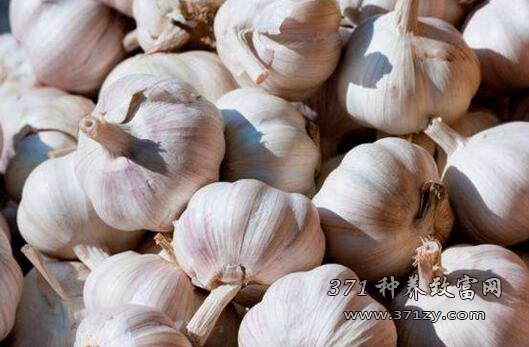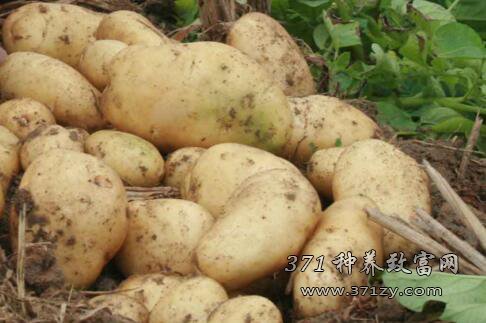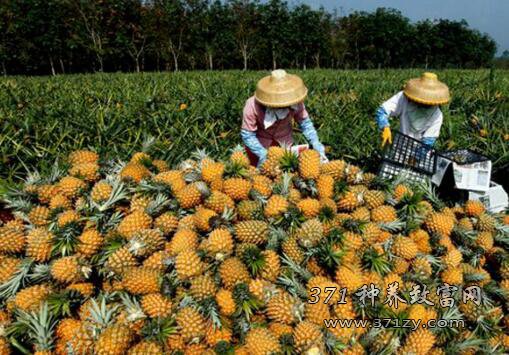Analysis and Forecast of garlic Market Price in 2017
Garlic planting threshold is low, market capacity is small, it is easy to induce behavior such as following wind and speculation. In recent years, garlic price fluctuates violently frequently, which has adverse impact on garlic farmers, stockholders and consumers. Since the new garlic season in 2016, affected by factors such as production reduction in main producing areas, rising costs, reluctance of garlic farmers to sell and influx of social hot money, garlic prices have opened high and repeatedly broken record highs; it is expected that the tight supply and demand situation of garlic will continue until April 2017, during which garlic prices will remain high. After the new garlic is listed in May, garlic supply and demand are expected to return to normal or loose, and prices will fall significantly.

I. Analysis of market supply and demand situation in 2016
(1) Extreme cold weather in spring leads to garlic production reduction
In recent years, garlic planting area has basically stabilized at 11.7 million mu. The planting area in 2015/16 is estimated to be 11.73 million mu, which is flat and slightly reduced compared with the previous year. However, affected by the cold wave and unstable weather last winter and this spring, garlic production in Shandong, Henan, Hebei and other main producing areas suffered serious freezing damage, which had a great impact on garlic production. Among them, Shandong, the main producing area, encountered extremely cold weather, and some garlic seedlings suffered from freezing disaster, especially in Tai 'an and Laiwu producing areas. In some areas, the mortality rate of garlic seedlings exceeded two-thirds or even failed to harvest; In Qi City, Henan Province, due to the early planting time of garlic in 2015, early mulching film and high temperature, root burning occurred, resulting in the formation of dead seedlings and weak seedlings after the Spring Festival, and the heavy snow in the later period further aggravated the garlic production reduction. In 2016, garlic yield was about 1450 kg/mu, down 10.3% year-on-year, and total output was estimated to be 17.01 million tons, down about 10% year-on-year.
(II) Garlic demand is on the rise
Garlic consumption in 2016 was estimated at 13.38 million tons and seed consumption at 1.92 million tons. Under the condition of garlic production reduction and price soaring, affected by the mentality of "selling but not selling", many farmers are eager to hoard garlic, vendors do not sell goods, brokers raise prices to buy and wait for prices to sell. If there is no cold storage, garlic will sprout after storage period of more than two months. Therefore, the hoarding cycle of small households is relatively short, mainly concentrated in the hands of large traders who can rent cold storage, resulting in social hot money entering garlic market for hoarding goods. The demand for garlic is enlarged, even butterfly effect is produced, and the effective supply of the market is reduced, resulting in further imbalance between supply and demand in the market.
(iii) Inventory is significantly lower than in previous years
In 2016, garlic storage volume decreased significantly. Garlic supplied in the market is divided into fresh garlic and cold storage garlic. Generally speaking, about 25% of fresh garlic directly enters the domestic consumption market or exports from May to August, and the rest garlic is basically purchased and stored by brokers, and listed as cold storage garlic in the later period. According to the consultation with the main garlic producing counties on the inventory, in 2016, the garlic warehousing volume decreased from nearly 2.4 million tons in the same period last year to about 1.9 million tons, and some cold storages were idle. The warehousing volume of Jinxiang, Laiwu and Lanling in Shandong Province was 1.2 million tons, 120,000 tons and 100,000 tons respectively, that of Qi City and Zhongmou County in Henan Province was 180,000 tons and 130,000 tons respectively, and that of Pizhou in Jiangsu Province was 170,000 tons.
(4) Garlic export significantly contracted
Garlic is an important export product in China. With the continuous improvement of garlic varieties and the gradual improvement of processing, storage and transportation conditions, garlic has been exported to more than 150 countries and regions in the world, and the diversified export market pattern has been formed. Affected by high domestic garlic prices, garlic exports were restrained to a certain extent in 2016, and imports increased significantly. From January to November, garlic exports were 1.56 million tons, down 10.0% year-on-year, and imports were 566 tons, 10 times that of the same period last year. Indonesia is the main export market of garlic in China, accounting for about 26% of the total export volume. The export price to Indonesia will directly affect the overall export price of garlic in China. Garlic sold to Vietnam, Malaysia, the United States and Brazil account for 9.1%, 7.5%, 7.1% and 5.9% of the total export volume respectively.
(5) Prices fall into a sharp rise cycle
According to the monitoring data of the Ministry of Agriculture, the average wholesale price of garlic in 2016 was 11.00 yuan per kilogram, up 88.6% year-on-year and 22.9% higher than the historical high in 2010 (8.95 yuan per kilogram). In the first eight months, the average wholesale price soared to 9.90 yuan per kilogram. In September, the garlic price (12.10 yuan per kilogram) broke through the historical high of 11.42 yuan per kilogram in 2010 and continued to rise steadily. In October, November and December, the wholesale price was 12.88 yuan, 13.48 yuan and 14.38 yuan per kilogram respectively. This round of garlic price surge mainly has the following three reasons: First, garlic production decreased, looking at the three garlic price spikes in 2010,2012 and 2016, the main incentive is garlic production reduction caused by changes in market supply and demand relations, resulting in tight market supply; Second, the cost has increased. The average cost per mu of garlic is 4500-5000 yuan, an increase of about 10% over the previous year, among which seed expenditure accounts for about 20%, employment expenses account for 15%-30%, and land lease expenses account for 10%-15%. Thirdly, social hot money flows into garlic market, garlic is easy to store and store, and there are a large number of cold storages in garlic producing areas, which makes garlic speculation more convenient.
II. Expected market trends in 2017
As the garlic warehousing volume in 2016 is significantly lower than that in the same period of previous years, and the garlic chip gap in the current market is also large, it is expected that the tight supply and demand situation of garlic will continue to April 2017, during which the garlic price will remain high. In 2016/17, garlic farmers generally expanded their planting area. After the sixth consecutive listing of new garlic in May, garlic supply and demand are expected to return to normal or loose, and the price will drop significantly.
(i) Significant expansion of planting area
In 2016/17, garlic was fully sown in October, and stimulated by high garlic prices, garlic farmers 'enthusiasm for planting was significantly enhanced. The fluctuation range of planting area in general years is about 5%. The planting area of garlic in this season is conservatively expected to increase by about 10%, reaching 12.8 million mu, among which the planting area of garlic in Shandong is 3.6 million mu, Henan 2 million mu, Jiangsu 1.5 million mu, Sichuan 560,000 mu and Yunnan 500,000 mu. If there is no major meteorological disaster during garlic growth, the yield is expected to recover to 1600 kg/mu, and the total yield is expected to reach 20.48 million tons.
- Prev

Forecast of Potato Market Price in 2017
Forecast of Potato Market Price in 2017
- Next

The unsalable price of pineapple in Wanning, Hainan is low, and it is difficult for growers to make money with a pineapple income of 2000 yuan per mu.
The unsalable price of pineapple in Wanning, Hainan is low, and it is difficult for growers to make money with a pineapple income of 2000 yuan per mu.
Related
- A course of planting techniques and methods on how to grow carrots
- How to plant the latest tulips?
- Is it better to pick tea in the morning or in the afternoon? When is the best time for tea to be picked? what is the third or fifth tea?
- Launch Yuanxiao Happy combination Haocha + Tea Yuan healthy Taste
- Penghu Tourism "Fireworks 20 Parade with You"
- 2022 West Lake Happiness holds "Digital Revitalization Voucher" and draws iphone13 and laptop.
- Banqiao Fuzhou social houses are designed to change start-up combined with police elimination to create a safe and livable environment
- The convenient measure of "mechanical weeding" in Xinbei has been abused and the Agriculture Bureau has imposed heavy penalties on the illegal land consolidation.
- Changgeng University Joins Hands with Four Memory Factories to Rescue Memory Talent Shortage
- The list of Taiwan's top 100 MVP managers is listed by the Director-General of the Farmers' Association of Sanxia District.

